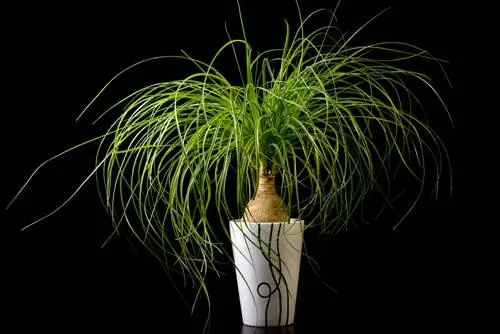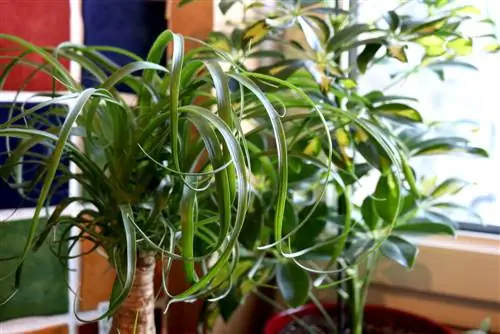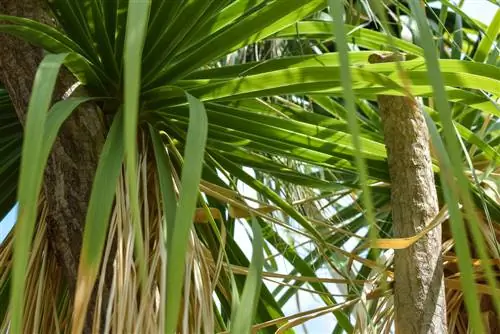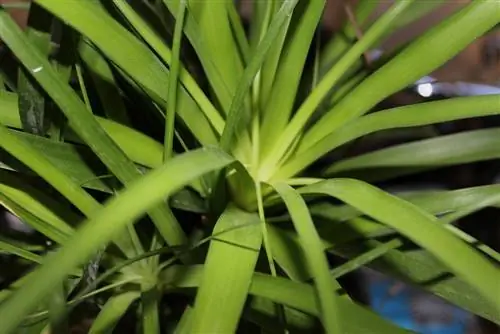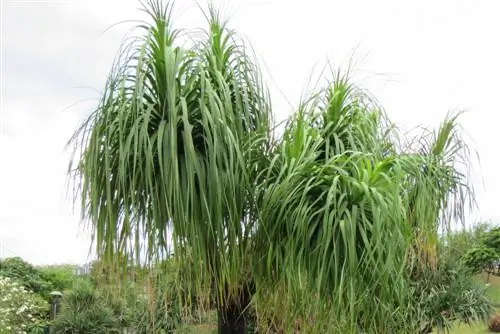- Author admin [email protected].
- Public 2023-12-16 16:46.
- Last modified 2025-01-23 11:21.
Nolina owes its name to the tubers from which slender, green leaves grow. In the home of the ornamental plant, the tubers grow very large, but when grown indoors they remain rather small. Caring for this extraordinary houseplant is not difficult. How to care for Nolina.
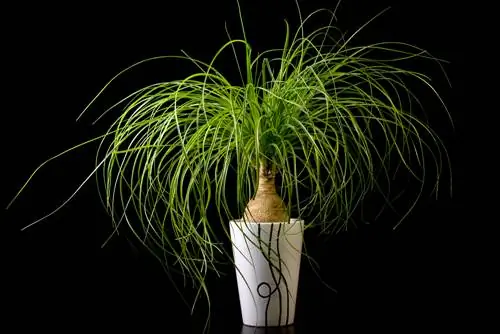
How to properly care for Nolina (elephant foot)?
When caring for Nolina, pay attention to sparing watering, small amounts of fertilizer, and avoiding waterlogging and pests. If the leaves are dry, simply pluck them. In winter, keep the plant cool and moderately bright.
What should you pay attention to when watering?
Nolina stores water in the tubers. That's why you have to be careful when watering. Too much moisture damages the plant and leads to rot.
Water Nolina regularly during the growing season without causing waterlogging. Excess irrigation water should be poured out immediately. Between waterings, wait until the substrate is almost dry. Nolina tolerates even longer dry periods well.
In winter, water even more sparingly so that the substrate is just a little moist.
When is Nolina fertilized?
Too much fertilizer harms the plant. Fertilize at monthly intervals with a little liquid fertilizer (€6.00 on Amazon). However, reduce the amount of fertilizer significantly.
Do you need to cut Nolina?
You are not allowed to cut Nolina. Simply pluck off dry leaves.
To propagate Nolina, separate secondary shoots from the Nolina and, after a short drying phase, place them in prepared pots with potting soil.
When is it time to repot?
The elephant's foot needs very little soil. It grows slowly, so you don't need to repot it often.
Only repot Nolina when the tubers protrude strongly from the pot and the container is completely rooted.
Well-drained soil is suitable as a substrate. A mixture of:is ideal
- Garden soil
- Sand
- Peat
- some ripe compost
What diseases and pests occur?
Waterlogging leads to rot and browning of the leaf tips.
Mealybugs and mealybugs can appear as pests. Pluck off affected leaves. Spray the plant with soft soap solution.
How do you care for Nolina in winter?
Nolina takes a break between October and March. During this time the plant must be kept cooler. Temperatures between 10 and 14 degrees are ideal in winter.
The winter location must only be moderately bright in winter.
Tip
Nolina needs a bright location during the growth phase, but cannot tolerate direct sunlight. You can easily keep the plant in the middle of the room as long as there is enough light there.

